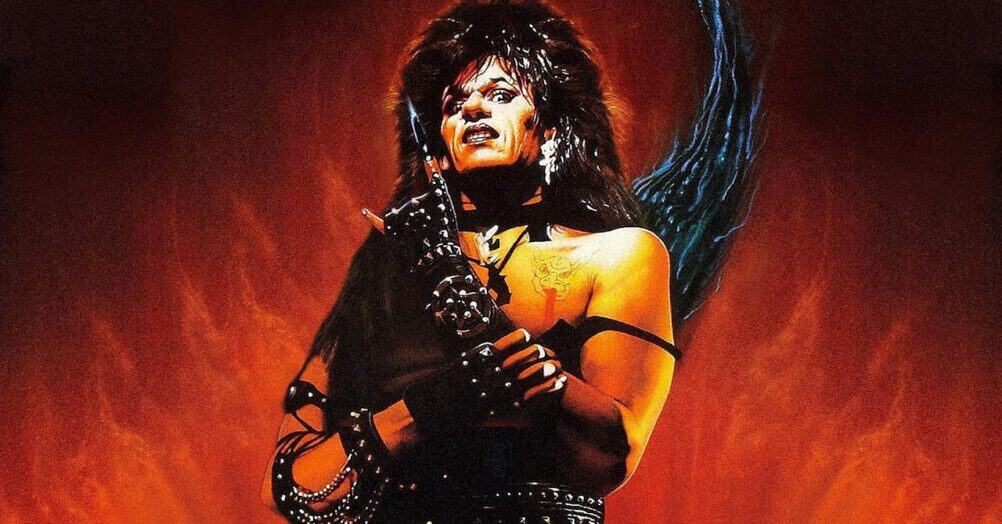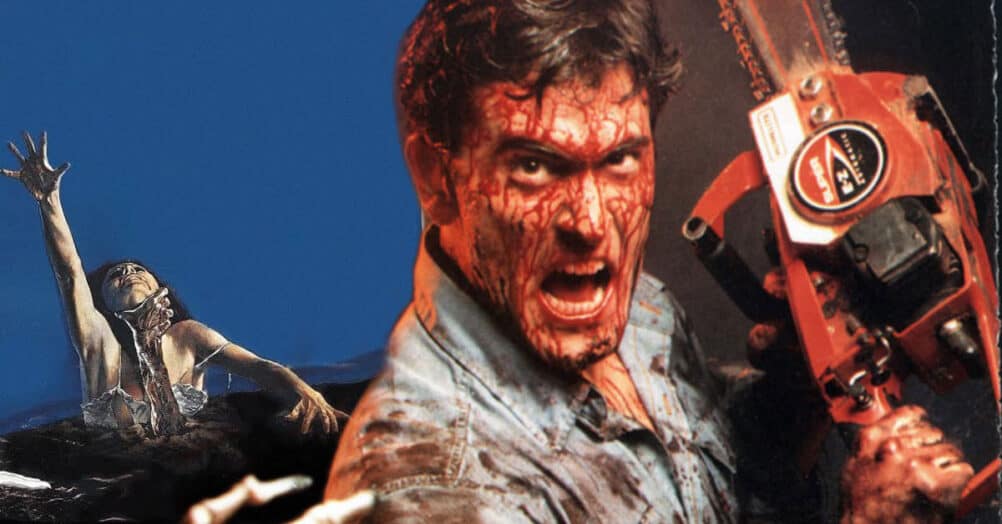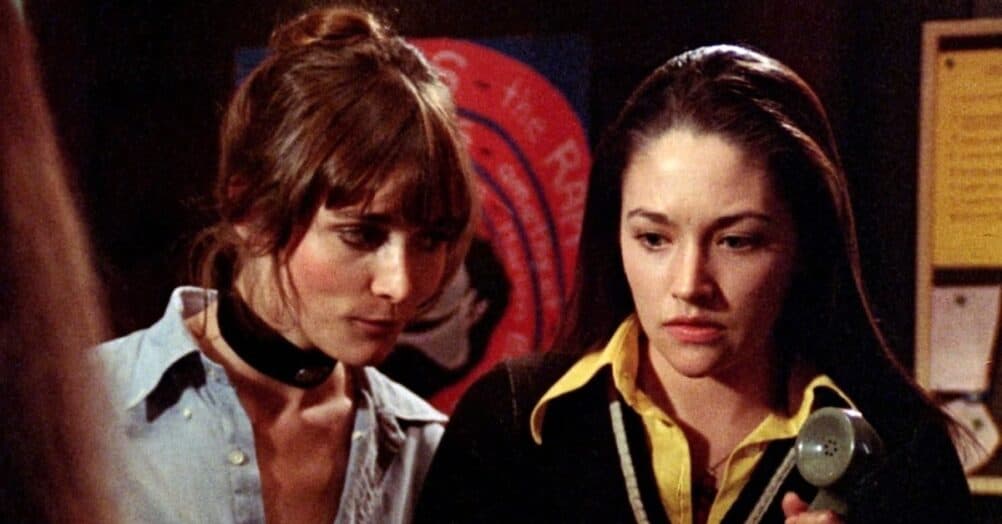Last Updated on June 27, 2024
Screenwriter Ian A. Stuart and executive producer John F. Bassett have both described their 1981 horror film The Pit as “B-grade garbage”, but if this is a movie that its own filmmakers would throw into the garbage heap, it’s also one that many horror fans have happily dug up over the years and proclaimed to be hidden treasure. We don’t consider this deeply strange, often inappropriate, oddly unnerving movie to be garbage – we count The Pit as worthy of being featured here on the Best Horror Movie You Never Saw.
CREATORS / CAST: While Ian A. Stuart would go on to be involved in the production of more than one hundred films and television programs that aren’t listed on his IMDb page, The Pit earned him his sole writing credit for a narrative feature, making it all the more disappointing that he wasn’t happy with the outcome. Stuart’s issues with the film really stem from the producers’ decision to hire Lew Lehman to direct, as it seems nearly every choice Lehman made during the production was the exact opposite of the choice the writer would have made.
The Pit was the first and only film Lehman ever directed, but he had a lot of experience working in theatre, so giving him the chance to make a movie was a sensible idea. He had even been the first managing director at the Charles Playhouse in his home town of Boston before he moved to Canada to work in film and television – primarily in the music department, but also as a producer. The fact that he was American may have also played into the decision to hire him for The Pit, because while the movie was a Canadian production it was actually filmed in Beaver Dam, Wisconsin – a location Bassett had fallen for when his daughter Carling, a future professional tennis player, attended tennis camp there. Lehman had also just earned some horror cred, as he was one of the writers on the 1980 horror film Phobia, directed by the legendary John Huston. Phobia hadn’t turned out very well, but it gave Lehman genre experience nonetheless.
The choices that didn’t sit well with Stuart began with the hiring of Sammy Snyders to play the lead role of Jamie Benjamin, a very disturbed young boy the writer had envisioned as being 8 or 9 years old. Snyders was in his early teens when he was cast, and while he was meant to be playing slightly younger than his actual age, Stuart felt that the age difference was enough to throw the whole story off track. While Jamie had been written to have an interest in the women around him, the scenes dealing with this interest were meant to come off as being more innocent and mischievous. Due to Snyders’ age, Jamie does come off as being quite the creepy little pervert in the film, even if he’s not aware of just how much of a creep he’s being. His level of maturity is lagging behind his outward appearance, which was not Stuart’s intention in the script.
Jamie has a crush on his live-in babysitter Sandy, played by Jeannie Elias, and sneaks into the bathroom while she showers – but she bathes him in one scene, so he might think it’s not such a big deal that he’s in the room with her while she bathes as well. Jamie also mentions that his mother bathes him with questionable frequency, an implication of molestation that Lehman added. Jamie’s creepiness goes even further with the local librarian, Laura Hollingsworth as Margaret Livingstone. Not only does he paste her face on a picture he cut out of a nude photography book, but there’s also a really crazy sequence in which Jamie calls the woman on the phone, claims to have kidnapped her young niece, and says he’ll only let the girl go if Margaret strips in front of her window so he can see her from outside. Jamie takes Polaroid pictures as he watches, pictures he’ll be looking at “a lot”.
But The Pit isn’t just the story of an adolescent pervert. Jamie also has very weird interactions with his teddy bear. The bear speaks to him, it’s his advisor, his confidante, his only friend… and usually a talking teddy bear would be the strangest thing in a horror movie, but here the bear is just one strange ingredient in a whole stew of weird. Teddy had been the title on Stuart’s script, but the film is called The Pit because the large hole Jamie finds out in the woods contains furry little flesh-eating creatures that he figures are troglodytes. Or, as he calls them, tra-la-logs, a mispronunciation that Stuart hated because he had written it to be “troglodies”. He thought “tra-la-logs” sounded ridiculous… and it does, but that’s part of The Pit’s charm. It is ridiculous and weird, with a lot of messed up stuff going on in it.
Jamie takes on the job of caring for these tra-la-logs, who are stuck at the bottom of the pit, and makes sure to keep them fed. At first he steals money so he can buy raw meat to feed them, but when that’s no longer an option he decides to start feeding people to these voracious little creatures. People who have wronged him, like the school bully, an old lady who was rude to him because she thinks he’ll grow up to be a hippie, Margaret Livingstone’s hateful niece Abergail – yes, the girl’s name is Abergail, with an R in there, it’s not just another one of Jamie’s mispronunciations – and the guy he sees as a rival for Sandy’s affection. Now Jamie is killing people, but it’s for a good cause. A tra-la-log’s gotta eat!
BACKGROUND: Stuart was inspired to write the Teddy script after having conversations with two of his friends. One was a ventriloquist who would use his dummy to communicate with troubled children, and Stuart was struck by the idea that the children would ignore the ventriloquist’s presence to focus only on the dummy that was interacting with them. The more direct and obvious inspiration came from his child psychiatrist friend, who told him about a patient who drew pictures of creatures that he felt he was in control of. The kid would imagine these creatures devouring the people he didn’t like, and once that happened he would no longer acknowledge the person’s existence. That’s how we get the tra-la-logs in the film, but the troglodies in Stuart’s script did not really exist, just like the creatures drawn by the psychiatrist’s patient didn’t exist. The psychiatrist told Stuart, “I’ve had to sign commitment orders for children who are 8, 9 and 10 years old, who are not really children. They’re little balls of hate and fury. And the only reason they haven’t killed somebody yet is they’re not big enough and strong enough. But, someday. Unless you deal with that problem, you have that next murderer, next rapist. That child who’s full of hate and fury is going to react violently against the world.”
Stuart wanted to tell the story of such a child, and he wanted the film to be a serious and realistic examination of his mental condition. Everything involving Jamie feeding people to the creatures in the woods was meant to be happening entirely in his mind. There was supposed to be a twist ending where the viewer would see that everyone the trogs had eaten were still alive – but Lehman didn’t shoot that twist ending. He took the straightforward creature feature approach, so in The Pit Jamie is a troubled kid and the trogs also exist. The interactions with the teddy bear may still be entirely in Jamie’s mind, although Lehman shot the bear in a way that also might make you wonder if it is actually possessed by some kind of entity.
If you want to see how Stuart meant for the story to play out, a novelization of his screenplay was written by John Gault and published with the original Teddy title. If you can get your hands on that book, apparently it tells the story in the dark and serious way that Stuart intended.
The screenwriter was not consulted about any of the decisions made after Lehman signed on, but he wasn’t kept away from the production completely. He did have to come in and shoot some of the scenes for Lehman because the director’s wife wouldn’t let him shoot any of the moments involving actresses who were nude or scantily clad… except one. Lehman cast his own 18-year-old daughter Jennifer as a skinny-dipper who appears late in the film, so he was present for the moment when she flashes her breasts. Jennifer Lehman would work on several more productions in the future, but as a business manager and accountant. Skinny-dipping in The Pit remains her only on-screen acting role.
Despite some involved having negative opinions about the finished product, The Pit seems to have been an enjoyable production to work on, especially for Beaver Dam residents who were hired to be part of the crew – and those who were paid four dollars an hour to be extras in the film. For example, the crew member responsible for hairstyle continuity was a local Beaver Dam salon owner. While she was appalled by the nudity and violence when she saw the movie, she had such a blast working on it for the six weeks of principal photography that she briefly considered moving to Canada to work as a hairdresser on more film productions. Her husband helped art director Peter Stone build the pit, which was a fifteen foot deep hole that was dug on a Beaver Dam property, lined with aluminum screening, sprayed with foam insulation, painted black, then dressed with roots and twigs. The bottom of the pit was covered with hundreds of boxes so the actors who had to fall into it would have a soft landing.
It sounds like Sammy Snyders had fun in Beaver Dam, as he would go out dancing at a local disco bar during his free time. He actually started off as a dancer before he got into acting, and retired from acting soon after The Pit so he could continue pursuing a career as a dancer. He’s a dancing instructor in Toronto now, teaching moves to classes full of people who, for the most part, have probably never seen his performance as Jamie Benjamin.
The filming of The Pit wasn’t all good times and dance breaks, they did hit some bumps along the way. Jeannie Elias was cast in the midst of production because Lehman felt the actress who was originally cast as the babysitter didn’t have the right chemistry with Snyders. That wasn’t the only recasting situation – according to Elias, the director had originally wanted the trogs to be played by children. But once the kids were put in the trog costumes and put to work in the heat of the summer of 1979, they ended up getting sick, so the decision was made to replace them with little people. The trog costumes were re-designed along the way because Lehman wasn’t happy with the way they looked, and the shots of the trogs inside the pit were reshoots conducted on a stage in Toronto. The look of the trogs is yet another thing that Stuart doesn’t like about the movie, so the re-design and reshoots didn’t do any good as far as he’s concerned.
According to actor Richard Alden, who plays Jamie’s father in the film, The Pit ran into some more issues in post-production, as Lehman’s plan to take the same approach to his film as John Huston took to Phobia didn’t go as expected. Alden said, “Huston cut his films in his head. Lew tried to do that and it didn’t work quite so well, I don’t think, because he had trouble putting it together.”
The Pit seems to have cut together just fine in the end, although it starts off with a jarring “flash forward”, as the first sequence in the movie shows Jamie knocking a bully into the pit on Halloween night – a sequence that we’ll see all over again nearly one hour later. Lehman and editor Rik Morden obviously thought they should get the movie started off with a kill, so they just lifted one from later in the movie and dropped it at the front in a rather clunky and awkward way. This causes some confusion early on, since it takes a while to understand that Jamie isn’t already feeding people to the trogs when the story begins, we’ve just seen a glimpse into the future.
There’s not much information available on how well The Pit performed when it was released in 1981. All you’ll find on Box Office Mojo is that it made five hundred and sixty dollars in the U.S., which doesn’t bode well for the rest of its take. Regardless of whether or not it made its budget back from theatrical play, it definitely started building a cult following as soon as people started renting it from video stores, unaware of the insanity they’d be witnessing once they hit Play on their VCR. The Pit has earned such a notable following over the years that Kino Lorber released a special edition Blu-ray in 2016.
WHAT MAKES IT GREAT: If a director had shot Stuart’s screenplay in exactly the way the writer wanted his story to be presented, maybe it would have resulted in an awesome, disturbing, realistic horror movie. According to Stuart, Bassett had another child psychiatrist read the screenplay before filming began and the doctor said the script was “the best depiction he had ever read of the mind a psychotic child”. There’s definitely merit in something like that, but it’s tough to imagine that sort of movie would have had nearly the amount of entertainment value that The Pit has. Stuart wanted his movie to have sensitivity, subtlety, and class – but The Pit is better without it.
Much of what makes this a great movie to watch are the decisions Lehman made and Stuart disagreed with. The fact that the trogs are real makes the movie much more fun than it would have been if Jamie was just imagining them, and the casting of Sammy Snyders really makes the movie what it is. Snyders, who has said he was oblivious to some of the more inappropriate aspects of the story, did a terrific job playing his very unusual character. He sells the oddness of Jamie perfectly – sometimes his bad behavior is amusing, and sometimes it’s effectively troubling. But while Jamie is occasionally creepy and needs someone to teach him that many of the things he does are very wrong, Snyders is also able to make him an endearing character. We certainly like him better than some of the jerks he ends up feeding to the trogs, and many viewers will probably be rooting for him to get out of this crazy situation without losing his life to the creatures he’s taking care of.
In the end, it may have been the film’s greatest benefit that the director and the screenwriter had opposite opinions on what was happening in the story, because those dueling viewpoints helped the film achieve its strange tone, where some of these things should only be occurring in the mind of an unbalanced young boy, but somehow they’re real.
The film was also given a nice boost by the music composed by Victor Davies, who took the salary he was paid and used it to hire more musicians to give the score a bigger, more Hollywood sound. It was worth the price he paid, because he and his collaborators turned in a great horror movie score.
BEST SCENE(S): Many of the best scenes in The Pit involve Jamie tricking people into taking a tumble into the trogs’ pit, which is made even better by the preceding scene in which he tries to get a cow to follow him to the pit. Realizing it’s going to be impossible to feed this cow to the trogs, Jamie tells it “I didn’t want to hurt you anyway” – then he moves on to the back-up plan of feeding humans to the trogs, which is much less unsettling to him than the idea of dropping animals into the hole. Innocent animals don’t deserve the fate of being torn apart by the tra-la-logs, but the nasty people he knows do.
The creature feature action reaches a new level toward the end of the film, when the trogs escape from the pit and start rampaging through the Beaver Dam countryside, attacking people like Lehman’s skinny-dipping daughter… And it all builds up to the perfect ending.
PARTING SHOT: Stuart has said that executive producer John F. Bassett apologized to him for what they did to his screenplay. Sadly, Bassett passed away in 1986 – which leaves us to wonder if he would still be apologizing for The Pit if he could see the fact that it’s enduring as a cult favorite forty years later. This movie is nothing to apologize for, it’s something to be celebrated because it’s such an awesomely weird piece of entertainment, a film that seems to take glee in the strange characters, sights, and scenarios it presents to the viewer. The Pit is so much fun to watch, it’s a shame that Lew Lehman never directed another movie, as we probably could have gotten some more great genre flicks out of him if he had.
But at least we got The Pit. So thank you to Bassett and to producer Bennet Fode for picking Lehman to direct their project. They made the right choice.
Some previous episodes of the Best Horror Movie You Never Saw series can be seen below. To see more, and to check out some of our other shows, head over to the JoBlo Horror Videos YouTube channel – and subscribe while you’re there!

















Follow the JOBLO MOVIE NETWORK
Follow us on YOUTUBE
Follow ARROW IN THE HEAD
Follow AITH on YOUTUBE